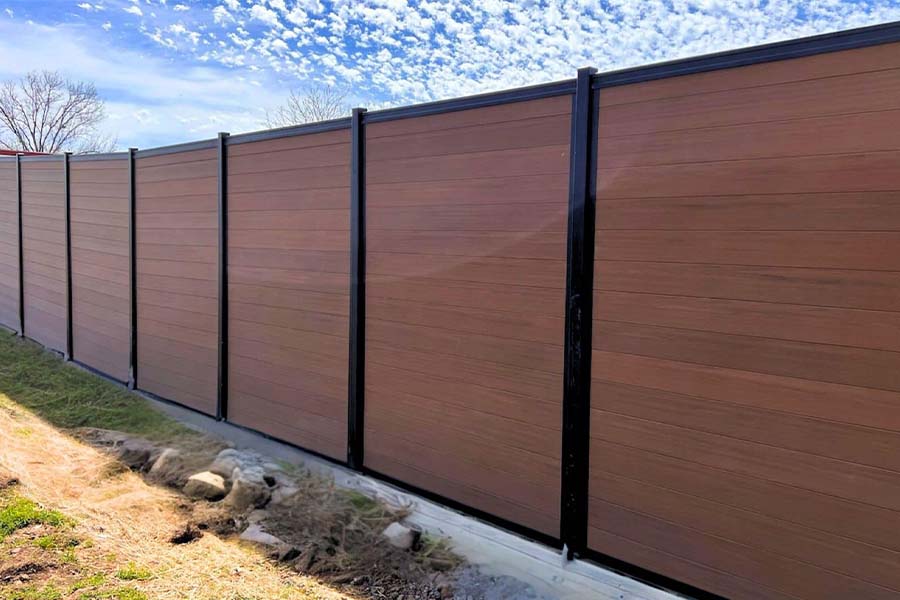All Categories
Featured

As sustainability becomes a growing priority for companies and homeowners, the need for environment-friendly structure materials prolongs to exterior areas, consisting of fencings. Standard fencing materials such as timber, steel, and plastic can have significant ecological effects, from deforestation to chemical treatments and plastic waste.
- Bamboo Fence. Bamboo is just one of the most lasting materials on the marketplace, and it is significantly utilized in fencing construction due to its quick growth and toughness. Unlike wood trees, bamboo is a turf that can expand back completely within simply a couple of years, making it very eco-friendly. It's naturally resistant to bugs and rot, which means it does not call for rough chemicals or treatments, making it an environmentally friendly choice.

Benefits: Bamboo fencings are durable, low-maintenance, and biodegradable. They are normally resistant to termites and wetness, reducing the requirement for chemical preservatives. Furthermore, bamboo helps in reducing dirt erosion because of its deep root systems. Factors to consider: Bamboo can be extra pricey than some typical timber secure fencing options, and it may not appropriate for locations with severe chilly or freezing temperature levels, as it can end up being fragile with time. 2. Recycled Materials Fencing. Several manufacturers now provide fencings made from post-consumer plastic, recycled timber, or even repurposed metal. Numerous composite products, for instance, are made from recycled plastic bottles, wood scraps, and other products that would certainly otherwise be thrown out.
Advantages: Recycled product fences aid save natural resources, reduce contamination, and lower the environmental effect of the production procedure. They can likewise provide excellent toughness, resisting decay, mold, and termites. Considerations: While recycled material fencings are very durable and eco-friendly, they may not have the exact same natural aesthetic that some house owners seek. Nevertheless, manufacturers now offer styles that resemble the appearance of wood or rock. 3. Composite Secure fencing. Compound fencing is made from a mix of timber fibers and plastic, typically including recycled products. This mix develops a very durable, low-maintenance fence that does not call for normal painting or staining, making it a lasting option. Compound fences are resistant to rot, bugs, and weathering, which means they can last for several years without the demand for frequent substitutes.

Perks: Composite fences are resilient and can withstand severe climate condition, minimizing the need for repair services or replacements. Because composite materials commonly include recycled content, they help decrease plastic waste. In addition, they do not call for hazardous chemicals or therapies. Considerations: Composite fences can have a greater upfront cost than typical timber or plastic, though their resilience and minimized maintenance prices frequently make them a much more economical alternative over time. 4. Living Fences. Living fences, additionally referred to as hedgerows, are an eco-friendly and cosmetically pleasing option that involves planting dense hedges, trees, or climbing up plants along your building line to create a natural obstacle. Popular plants for living fencings include boxwood, privet, and holly. These plants can be expanded to give privacy, windbreaks, and sound reduction while adding to environmental wellness.
Conveniences: Living fencings advertise biodiversity, enhance air quality, and take in carbon dioxide, making them one of the most environmentally friendly fence options. They additionally provide an all-natural environment for birds and bugs and can decrease sound pollution and assist regulate temperature levels in your lawn. Factors to consider: Living fencings call for regular maintenance, such as trimming, watering, and in some cases pest control. They also take some time to establish and may not offer immediate privacy compared to solid wood or vinyl fencings. 5. Cedar and Redwood Fence. Cedar and redwood are preferred all-natural wood choices for fencings. These materials are naturally resistant and resilient to rot, parasites, and moisture, which means they typically don't require the use of damaging chemical treatments. When sourced from sustainably managed forests, cedar and redwood fencings can be an environmentally pleasant selection that offers both appeal and long life.
Benefits: These timbers are naturally degradable, eco-friendly, and offer superb durability and natural elegance. Cedar and redwood additionally have a reduced environmental effect when gathered responsibly, making them an eco-friendly selection for lots of property owners. Considerations: While cedar and redwood fencings have ecological advantages, they do still need periodic upkeep and are much more costly than various other wood options. It is very important to make sure that the timber is sourced from sustainable woodlands to optimize its ecological benefits. 6. Rock and Block Fencing (Redeemed) Stone and brick fencings are low-maintenance and extremely durable, and they can be green when made from redeemed materials. Redeemed rock and brick are usually recovered from old structures or building and construction jobs, reducing waste and preserving natural deposits. These products use a timeless appearance and are extremely immune to weathering, making them a resilient remedy for fencing.
Advantages: Redeemed stone and block are sturdy, cosmetically pleasing, and require marginal upkeep. By repurposing these materials, you aid lower the need for new sources and decrease waste in land fills. Factors to consider: The installation of stone and brick fencings can be labor-intensive and extra costly contrasted to other materials, but their longevity and reduced upkeep demands can make them economical in the future. Conclusion. Environmentally friendly fencing choices are not only helpful for the atmosphere yet likewise use durability, low maintenance, and aesthetic allure. Whether you select bamboo, recycled products, composite secure fencing, living fencings, or lasting wood like cedar and redwood, there are many means to lower your environmental impact while enhancing your building's look. By selecting these eco-conscious materials, you can contribute to a healthier world and create an exterior space that reflects your worths.
Latest Posts
Discover the Perfect Rug for Your Home
Published Apr 20, 25
1 min read
Why Choose NAPA AutoCare? Montclare Auto Repair Delivers the Best Service
Published Apr 20, 25
2 min read
Obtain Your Roofing Winter-Ready with A-Abel Roof in Chicago
Published Apr 20, 25
1 min read